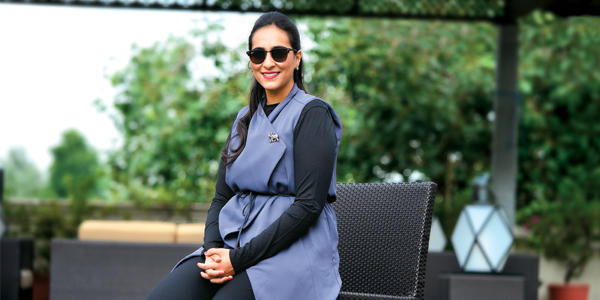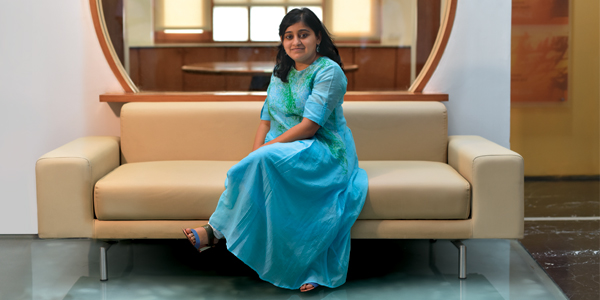Meet the poster-girl of mass EV mobility in India: Sulajja Firodia Motwani of the Kinetic Legacy
After a painful exit from two-wheelers, Sulajja Firodia Motwani is back — resurrecting Kinetic’s legacy in an electric era
From conventional to unconventional, how Sulajja Motwani found her calling in electric vehicles
Hope is a good thing, maybe the best of things, and no good thing ever dies.” That’s the line the protagonist Andy Dufresne (Tim Robbins), in the 1994 movie The Shawshank Redemption, writes in a letter to his older prison inmate named Red, played by Morgan Freeman. The movie till date remains a favourite of those who enjoy meaningful cinema and Sulajja Firodia Motwani is no exception. But what makes the period-prison movie Motwani’s all-time favourite is the underpinning of the movie that faith can move mountains. That’s not surprising considering that 48-year-old’s own story has nothing been short of a movie script — a promising start, an existential crisis and coming out triumphant at the end.
 Despite hailing from a Marwari family, she, her sisters — Vismaya and Kimaya — and her brother Ajinkya were brought up in a liberal atmosphere. Motwani remembers her grandmother, the late Pankuwar Firodia, as a strong-willed and intelligent woman who grew up in a small city called Beed in Maharashtra. “Determined to pursue higher education after her high school, my grandmother went on a hunger-strike for 14 days,” says Motwani. She did get her way, but her father did not speak to her for several years until Motwani’s father, Arun Firodia, was born! “She completed her MA and actively participated in India’s freedom struggle,” says Motwani, whose father completed his BTech in electrical engineering from IIT-Mumbai in 1965 and, later, completed his MS in Electrical Engineering from MIT. Her mother was a doctor by profession.
Despite hailing from a Marwari family, she, her sisters — Vismaya and Kimaya — and her brother Ajinkya were brought up in a liberal atmosphere. Motwani remembers her grandmother, the late Pankuwar Firodia, as a strong-willed and intelligent woman who grew up in a small city called Beed in Maharashtra. “Determined to pursue higher education after her high school, my grandmother went on a hunger-strike for 14 days,” says Motwani. She did get her way, but her father did not speak to her for several years until Motwani’s father, Arun Firodia, was born! “She completed her MA and actively participated in India’s freedom struggle,” says Motwani, whose father completed his BTech in electrical engineering from IIT-Mumbai in 1965 and, later, completed his MS in Electrical Engineering from MIT. Her mother was a doctor by profession.
“My father is the best auto engineer that the country has produced,” says Motwani. Arun went on to start the flagship company, Kinetic Engineering, and is credited with building the first totally indigenous moped, Luna. But, more importantly, he gave India its first gearless scooter, KH-100, a year after forming a joint venture with Honda Motor Company in 1984.
Just like her father, Motwani went on to pursue a management degree from Carnegie Mellon University, Pittsburgh. Incidentally, she holds the record at Carnegie for being the youngest MBA at 21. “The average age in my class was 28,” says Motwani, who landed a job with an investment consultancy firm, Barra International, in California. During the four years at Barra, she managed sales and also got her an exposure to finance. This was also the time she met and married Manish Motwani, who was with Sun Microsystems.
After her grandfather was diagnosed of cancer, Motwani cut short her stay in the US to come back to India. That marked a turning point in her journey. What made the decision easier to make for Motwani was that her husband, too, willingly gave up his career at a time when the Silicon Valley was in the grip of an innovation fever. Though both were Green Card holders, they gave up the citizenship as well.
She was heading to join the family business but Barra entrusted the 25-year-old with the task of setting up its Indian operations. “It did my confidence a world of good,” says Motwani, who unfortunately couldn’t get to train under her grandfather who passed away in 1996, the year she came back to India and joined Kinetic.
During the initial years at Kinetic, she immersed herself in work. Besides overseeing the company’s strategy, sales, marketing and finance portfolios, she practically lived out of a suitcase. “I kept travelling, meeting dealers across the country during the first few years,” says Motwani. In fact, on the fourth day after her son, Siddhant, was born, she was at work. But Motwani was also aware that the trouble was brewing in the JV.
Breaking bad
In the ‘80s, Kinetic was the country’s biggest moped maker with 44% market share. A decade later, the market share halved to 22% and its overall market share in two-wheelers reached an abysmal 5%. By 1991, Kinetic, though was clocking a turnover of Rs.1.21 billion, it had to face competition from TVS Suzuki and Hero Honda as the market was slowly moving towards motorcycles.
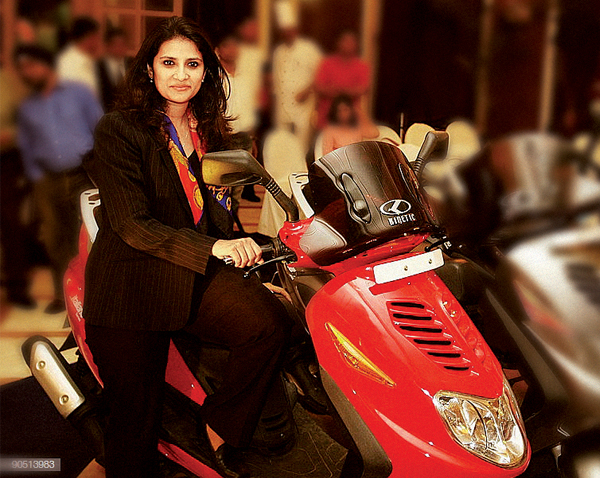
Motwani points out that Kinetic had no motorcycles to offer given that Honda had an existing joint venture with Hero. “We were depending on Honda for technology. But once they knew they are coming on their own, they stopped providing us new technology. It hit our rollouts,” recalls Motwani. With Kinetic Honda’s fortunes declining, the Firodias agreed to let the partner increase its stake to 51% in 1993, hoping that an in-control Honda would bring in new products. But that did not move the needle. At a time when its competitors were spending 1-1.5% of sales on product development, Kinetic Honda was stuck at 0.31%. “We knew that things weren’t going to work and chose to buy them out,” points out Motwani. The 14-year-old JV finally was put to rest in 1998.
The ensuing decade from 1998 to 2008 was a challenging one where Kinetic tried to launch motorcycles and scooters with failed partnerships, right from Korean two-wheeler maker Hyosung Motorcycles in 2001 and Italjet Moto of Italy in 2004 to the Taiwan-based Sanyang Motor Company, which also picked up 11% stake in the Indian operations, in 2006. “The venture with Sanyang was doing well and we had successfully launched a model called Flyte,” says Motwani, adding that company’s problems back home resulted in the venture fizzling out. By then the company had raked up a Rs.5-billion debt and was bleeding.
Kinetic needed to have a survival plan as Honda had launched a four-stroke scooter that was Rs.4,000 cheaper than Kinetic’s two-stroke model. “We couldn’t counter their might as they were willing to take losses, and scaling up to launching motorcycles would have meant investing Rs.10 billion afresh,” narrates Motwani. What hurt the group dear was also the decision to invest in Tata Motor’s Nano project. It had set up new a transmission line for Rs.900 million and had invested in land in Singur. “The project never really took off in time,” mentions Motwani. Also, a rapid fall in the rupee from 36 levels meant that its dollar loan had turned costlier.
That’s when she got talking with the Mahindras. “Anand Mahindra is a good friend of mine and he mentioned the group’s interest in entering the two-wheeler (2W) segment,” recalls Motwani. Finally, after several rounds of talks, a deal was inked in 2008. While Kinetic had a strong dealer network, it lacked deep pockets. “If we had not aligned with Mahindra we would have gone the BIFR way and the business would have collapsed,” explains Motwani. However, the arrangement did not last for long since there was a disagreement over branding. Also, there were several rounds of capital infusion which did not yield desired results. In the end, Mahindra chose to invest in its own brand. “We were already getting diluted as a minority partner and then with business not going as expected, we felt it was better to part ways,” explains Motwani. In 2014, Kinetic sold its 7% stake to a PE fund Samena Capital for Rs.1.82 billion. While the exit from the two-wheeler industry was painful, the group managed to clean up its balance sheet, pay off debtors, offer VRS to employees and managed to stay afloat.
A renewable future
Much before the exit from 2Ws, Motwani had already sensed that auto industry was migrating to stricter emission norms and there was disruption coming in from electric vehicles (EVs). In fact, it was around 2011, that Motwani was introduced to the concept of EVs when she interacted with the Council of Scientific and Industrial Research (CSIR). The following year, on a trip to California, she also got to drive a Tesla. But she was convinced that, while EV was indeed the future, in India, mass mobility would be a segment where there was a strong business case, leading to the birth of Kinetic Green Energy and Power Solution.
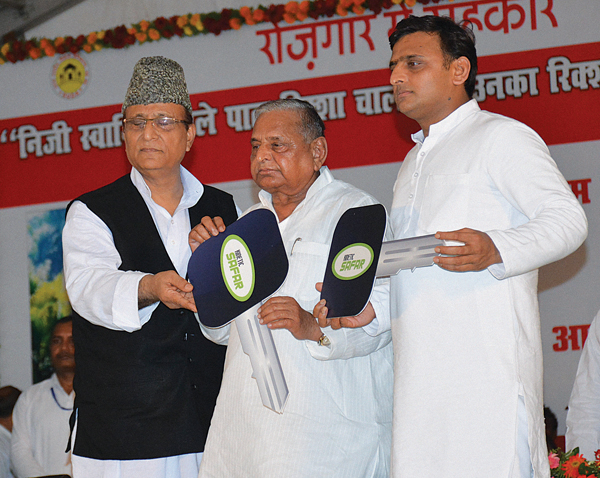
Since there was a non-compete clause with Mahindra, foraying into 2Ws was also out of question. So, in 2014, Kinetic Green began by selling golf cars, and put its brand out in the market. “Since, three-wheelers (3Ws) would have taken some years, we said let’s look at our product acceptance, technology and get to understand the market better,” says Motwani. It clocked a turnover of Rs.50 million the first year. In January 2016, it finally rolled out an e-rickshaw priced at Rs.100,000 plus battery charges, that saw revenue jumping to Rs.150 million in FY16.
Since the market was inundated with cheap Chinese makes, Motwani and her team got on the ground talking to more and more people, especially sensitising policy makers and governments.
Convinced about the reliability and durability of Kinetic’s products, the company in 2017 managed to bag a Rs.4-billion order for 27,000 e-rickshaws from the UP government, which was then helmed by the-then Chief Minister Akhilesh Yadav of Samajwadi Party (SP). “All the advanced features that we had shown them became the basis of the tender specification,” says Motwani. It was a turning point as the company ended up selling 10,000 vehicles in the first phase and saw its turnover surge to Rs.1 billion by FY17.
But again Motwani faced a big setback when SP lost the assembly elections and the new government discontinued the initiative. “We had made 3,000 additional vehicles as a part of the order but could not sell them (to the government),” says Motwani. Instead of getting bogged down, she chose to find another way out and decided to build a retail network. “We already had a strong business proposition as 10,000 rickshaw pullers from the UP had become auto owners, and from barely managing Rs.200 a day, they were earning Rs.800-1,000,” she says.
Kinetic managed to create a strong network of 180 dealers leveraging on its past brand legacy, broad-basing its institutional client base and moving up the value chain. In terms of technology, Kinetic got into lithium-ion batteries, advanced telematics and making high-speed 3Ws. More importantly, the company has indigenised 90% of its content with a strong supply chain.
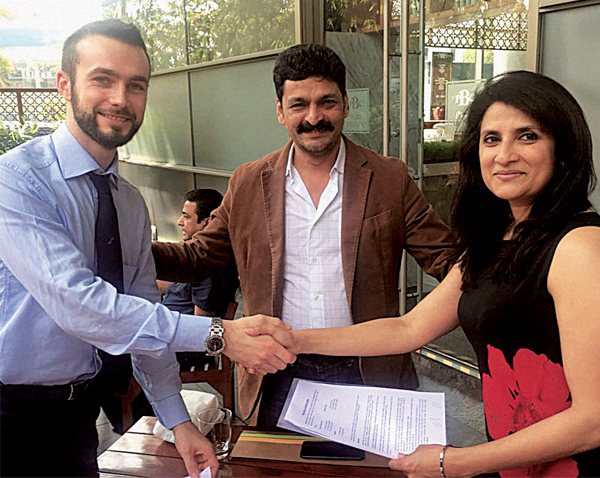
It got a major boost following its association with Italian auto luxury brand Lamborghini, to produce and sell the company’s branded e-golf carts and campus vehicles for the global market, predominantly selling in the US, North America, Asia-Pacific and the Middle East. Today, the 75:25 JV operates as a subsidiary of Kinetic Green. “We have a 10-year brand licensing agreement and the golf cart market is expected to become a $5-billion market by 2024 from the current $3 billion,” she says.
Over the next five years, the JV has set a target of selling 5,000 golf carts a year, that’s Rs.3-4 billion business per annum. Of the 5,000 units, 8% golf carts will be sold in India. Since the JV will be using the existing manufacturing facility and R&D centre of Kinetic Green, Motwani points out that capital allocation won’t be huge. “It will be in the range of Rs.50-100 million.” In FY19, Kinetic Green hopes to end with a revenue of around Rs.800 million to Rs.1 billion, and the target is to double the turnover in FY20.
That the momentum is in Kinetic Green’s favour is evident with the company bagging yet another government order worth Rs.1.8 billion from the Andhra Pradesh (AP) government for 7,500 cargo vehicles for door-to-door waste collection. The company has already delivered 200 vehicles across 13 districts so far. But having learnt its lesson with the UP order, Motwani is not going overboard as the assembly election are due to be held in AP as well.
The company is looking at 60-40, institutional-to-retail mix to keep growth ticking. “With falling battery prices and more government focus on EVs, we are looking at becoming a Rs.20-billion enterprise by the end of five years,” says Motwani. Having run a successful 2W business and having lost it all, Motwani is more confident about the future. “Even during the most testing phase in the past, I never lost hope and believed that I shall overcome it,” says Motwani. Little wonder that her second favourite flick goes by the title of Life Is Beautiful.










